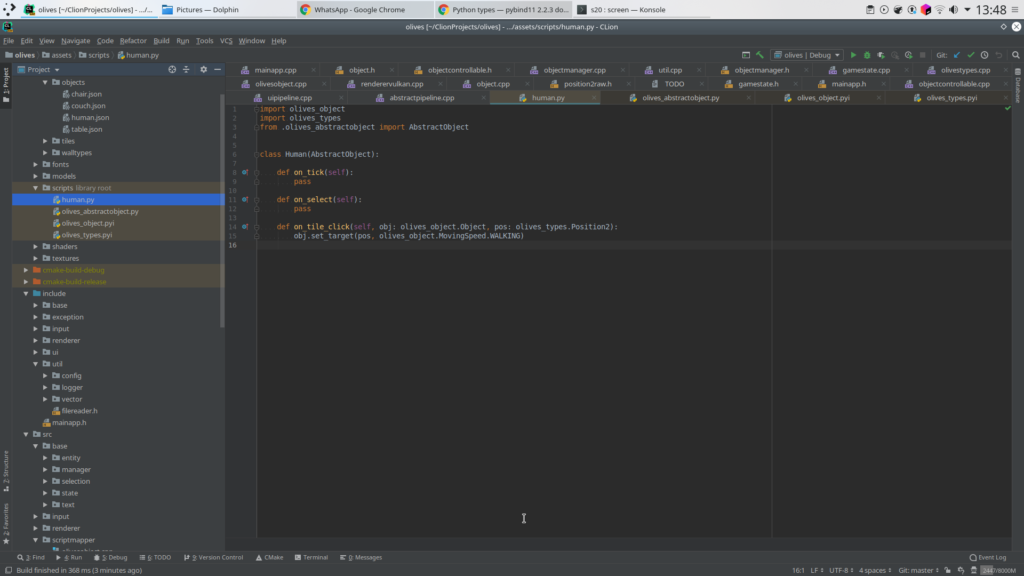Move the call to set a new target for a controllable object to the python script
After maintenance and stability commits, back to feature development!
What this slightly confusing commit message is trying to say is that we are finally not only calling Python code from C++, but also the other way around, calling C++ code from Python.
This is achieved by properly setting up bindings from some classes that are now callable via Python.
This commit was not as big in terms of changes, but the concepts that changed, from now on if the user is clicking somewhere the new movement target is no longer set directly in C++, instead it is going through Python for that:



